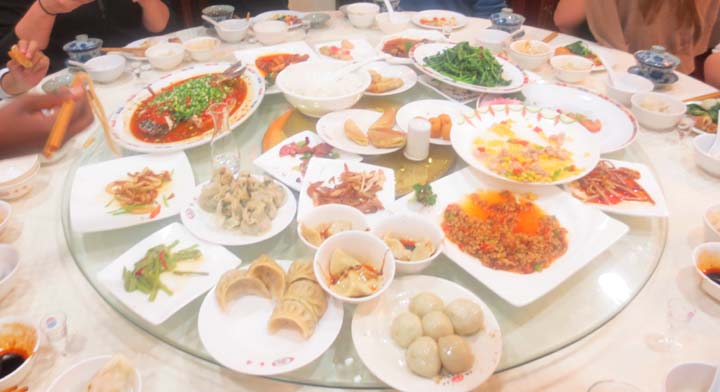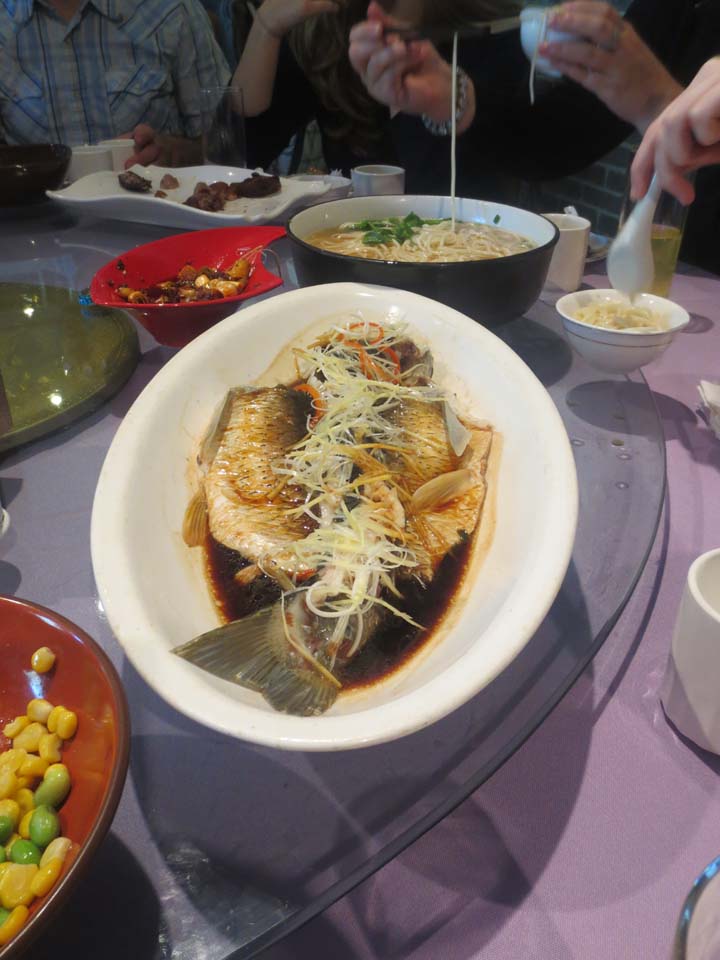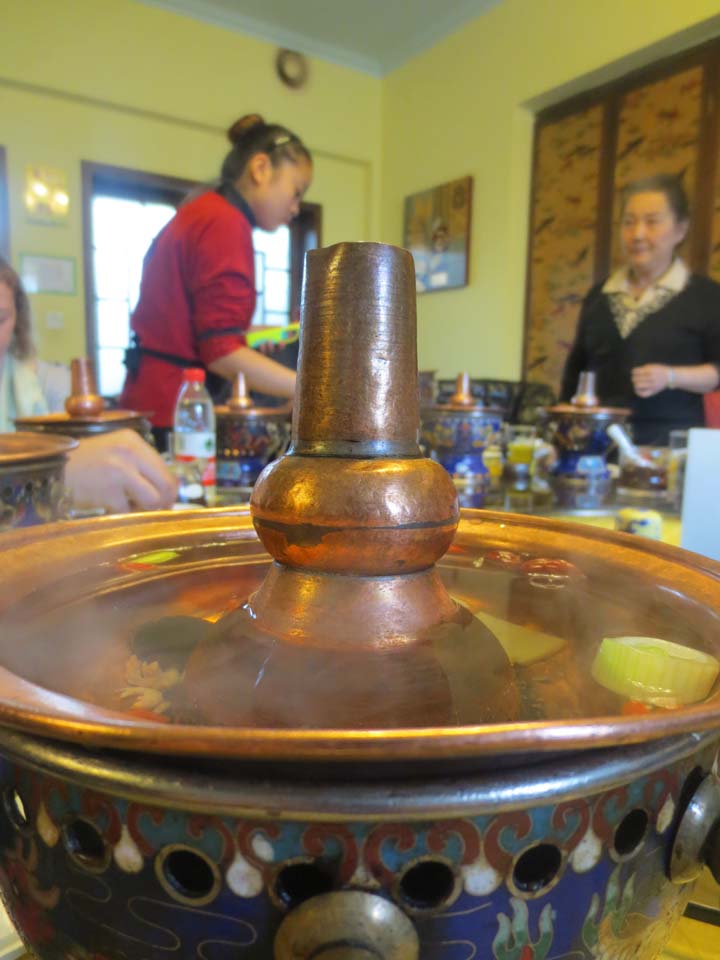My Experiences in China, by Daniel W. PersingPersonal Perspectives
Fall Volume: 2013 Issue: 20(3) page(s): 33-34


 It is more than six months since I returned from my month studying abroad in China. At times I am still not used to being back. Such was the intensity of my culinary adventures. This was the first time in my life I knew what it was like to stand in a crowded square of thousands and realize I could search all day and not find a single person who looked anything like me. It is more than six months since I returned from my month studying abroad in China. At times I am still not used to being back. Such was the intensity of my culinary adventures. This was the first time in my life I knew what it was like to stand in a crowded square of thousands and realize I could search all day and not find a single person who looked anything like me.
Every single day was filled with a hundred unexpected adventures. Some including having lunch on top of mountains more beautiful than I knew existed. Others included holding a panda in my arms. Still others were when I saw statues ten times older than my entire nation. When you visit a place so completely foreign, as China was to me, the adventures are more than could then or even now imagine possible. More than anything, what I remember most these many months later is the delicious and amazing food. I thought I understood what Chinese food really was, and I am not talking about American-style Chinese food that most people know today. I have friends from China who have family run restaurants; and I have been to Chinatown in San Francisco, Los Angeles, and New York where real Chinese immigrants recreate their real at-home food. I have studied Chinese cuisine extensively while working on my degree in Culinary Arts at the Culinary Institute of America, and I honestly thought I knew. That was until my first meal in China, then I really learned a lot about Chinese food. Let me tell you in advance, you may see some of the dishes I had there on the menu of your favorite local Chinese restaurant in America. But let me assure you that comparing any of these to what Chinese food really is in China is the same as comparing ketchup on toast to pizza. The first thing I ate in China was a small bowl of dumplings floating amidst a savory broth. It was not much, but we had just gotten off plane after a fourteen hour flight. No one among us really cared what was for dinner at that point in time. If I knew then what I know now, I would not have devoured the first few dumplings so fiercely. Instead, I would have savored them properly, because every bite far outclassed anything I had previously called 'Chinese Food' in America. Their dough was soft and springy, but once you actually slipped it past your lips it seemed to dissolve and let the flavors of the filling explode onto your taste buds. Only in that moment did I really have an idea what I was in for during this trip. The next day I had my first proper meal in China. It established dining criteria which luckily did not change much during my trip. You see many restaurants in China serve food family style. That is, all the food is carried to your table at one time, and in large quantities. You and your tablemates are allowed to take your time devouring it in any manner you please. All the fancy plates of fish, pork, noodles, soup, rice lay before you exactly like your own private buffet. They are on a massive turn-table for easy access. It can be fun at times to wait for a friend to reach for a piece of food, and then subtly turn the table so it is out of their reach. However, I would not recommend doing this more than once, especially when you are with other hungry foodies such as we were. Every day our meals were like this, and it was not often that we would see the same food twice. This allowed us, in a very short time, to have the opportunity to taste hundreds upon hundreds of authentic Chinese dishes in a relatively short amount of time. Luckily, one of the few dishes that made a regular appearance was the one that I enjoyed the most during our first meal. It was twice cooked pork. This is pork stewed in a spiced broth, then sliced and pan fried along with scallions and ginger. This makes it twice cooked, and allows the pork to be soft and moist, gently kissed by the wok's heat. It gives the pork a light sear on the edges. I knew the trip was worth it after a single bite! Fish is a big part of the Chinese diet, so much so that it would take too much time to prepare it in the way we do here in the USA, into perfect little sections for easy consumption. Not so in China. There, it is mostly served as one large piece, head and tail and all! Our hosts made it clear that it was our job to get our chop sticks in there and rip away the pieces we wanted while we could. Not only did this make for a wonderful centerpiece to some of our meals but it also provided some entertainment. It would ultimately turn into a chopstick sword fight for the best pieces. China is a very large country, and just like in America, different regions have different culinary origins. That is how French cuisine influenced parts of the southern states of the United States, and how Mongolian cuisine influenced much of the northern regions of China. We were treated to a traditional Mongolian hot pot which most closely, for me, resembled fondue. You are given a special pot with burner inside. It has a small chimney that rises from the center, allowing the heat to move upwards and heat the water filled basin around it. At this point you are given herbs, spices, and vegetables to create your own broth. After your broth has simmered, out comes beautifully sliced portions of meat. These, you then dip into your broth carefully until they are fully cooked. I will never go back to boring old cheese fondue, this was as much of an activity as it was a meal. By far the most interesting item I found on the menu was xiao long bao, or 'soup dumplings.' We came across them outside of Xian. They look like the normal dumplings we often see, but instead of having a meat or vegetable filling they are filled with soup made into a gelatin that is wrapped in dough and steamed just prior to serving. By the time they reach the table you have delicate dumplings filled with steaming hot soup. It might sound dangerous, but they are eaten with a spoon rather than chopsticks, so you are quite safe when enjoying this delicious treat. Yes, China was an amazing culinary adventure that I will never forget. I do hope to return one day to taste all the dishes that are now familiar to me, and many more. It is hard to readjust to a fork and knife and to being served individual portions rather than the communal eating experiences we had in China. Absence does make the heart grow fonder, and the longer I am away the more I miss China and its foods. I know I will visit there again one day in order to relive the wonderful experiences I had. I also know that this trip made me love Chinese food all the more. |



 It is more than six months since I returned from my month studying abroad in China. At times I am still not used to being back. Such was the intensity of my culinary adventures. This was the first time in my life I knew what it was like to stand in a crowded square of thousands and realize I could search all day and not find a single person who looked anything like me.
It is more than six months since I returned from my month studying abroad in China. At times I am still not used to being back. Such was the intensity of my culinary adventures. This was the first time in my life I knew what it was like to stand in a crowded square of thousands and realize I could search all day and not find a single person who looked anything like me. 